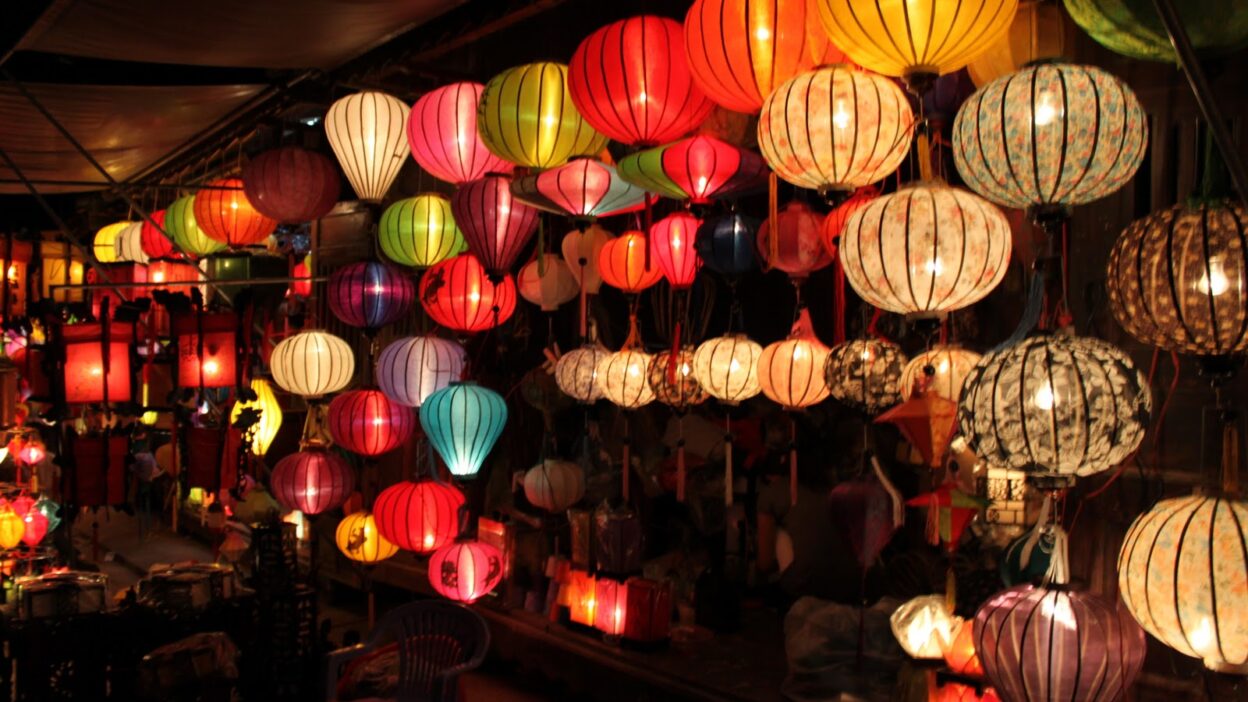Hoi An, a UNESCO World Heritage Site in central Vietnam, enchants visitors with its well-preserved architecture, vibrant food culture, and most iconically, its lantern-lit nights. Among the many traditions that define this ancient town, lantern making Hoi An stands out as a captivating cultural experience that connects locals and travelers through the art of light, color, and craftsmanship.
For foreign travelers seeking more than sightseeing, learning how to make traditional Vietnamese lanterns in Hoi An provides a hands-on journey into the soul of the city.
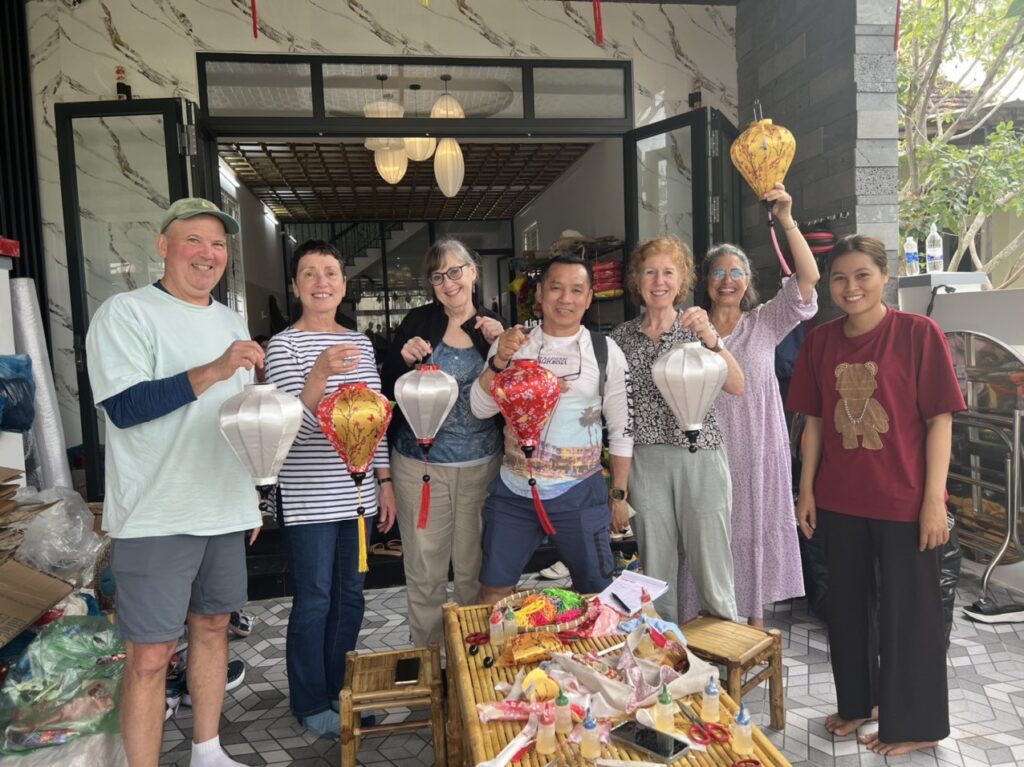
The Origins of Lantern Making Hoi An
The art of lantern making in Hoi An dates back to the 16th and 17th centuries, during the town’s golden age as a bustling international trading port. Influenced by Chinese, Japanese, and Vietnamese aesthetics, lanterns were originally used to light homes and spiritual spaces, symbolizing luck, happiness, and prosperity.
According to local elders, the legendary origin of Hoi An’s lantern craft can be traced to an artisan named Xa Duong, who specialized in making lion dance masks and handmade lanterns for festivals and competitions. Over time, these handmade lanterns became a central part of Hoi An’s visual identity.
The Revival of a Traditional Craft
While lantern making experienced a period of decline, the recognition of Hoi An as a world heritage site in 1999 sparked a renewed interest in preserving and promoting this traditional art. Today, lanterns not only illuminate the city’s streets during full moon festivals, but also light the path for cultural tourism and creative exchange.
One of the key figures in reviving this art is artisan Huynh Van Ba, who reimagined the traditional lantern with a collapsible bamboo frame and colorful silk coverings. His efforts popularized a form of lantern that’s now exported globally and has inspired travelers worldwide to learn how to make one themselves.
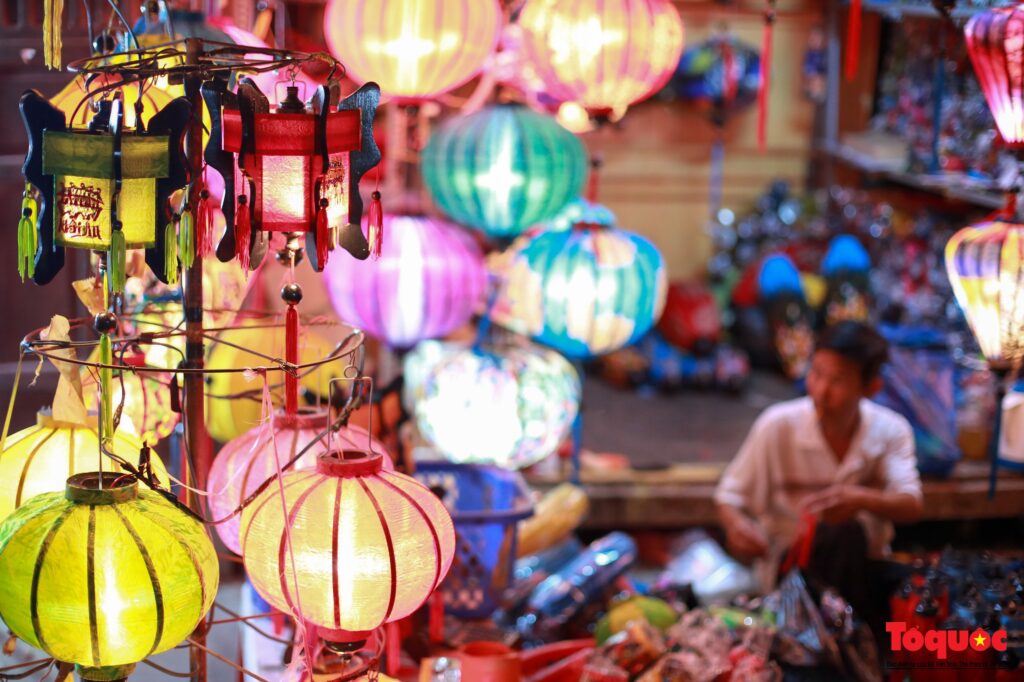
Why Travelers Love Lantern Making Hoi An
A Hands-on Cultural Experience
Unlike visiting a museum or taking photos of lanterns on display, participating in a lantern making workshop in Hoi An allows travelers to engage directly with Vietnamese craftsmanship. With the guidance of skilled artisans, even those with no artistic background can create their own unique lantern.
An Ideal Souvenir
Forget mass-produced magnets or T-shirts. A handmade lantern becomes a meaningful, personalized souvenir — something travelers can take home not just as a decoration, but as a memory made by their own hands.
A Bridge Between Cultures
Workshops often include insights into the meaning of different shapes, colors, and symbols in Vietnamese tradition. This turns the experience into a cultural dialogue, fostering a deeper appreciation for the values and aesthetics of the host community.
How a Lantern Is Made: Step-by-Step Process
Step 1: Crafting the Bamboo Frame
- Artisans use aged, water-treated bamboo for flexibility and durability.
- Bamboo is split, boiled in salt water to avoid mold and termites, and dried.
- The bamboo is then shaped into traditional forms like spheres, cylinders, garlic bulbs, or lotuses.
Step 2: Adding the Fabric Cover
- Soft but strong silk or taffeta is chosen for its vibrant colors and light diffusion.
- The fabric is cut into precise segments to match the frame’s dimensions.
- Using natural glue, the fabric is carefully stretched and adhered to the frame.
Step 3: Decoration and Personalization
- Participants may choose to decorate with hand-painted motifs, calligraphy, or even their names in Vietnamese.
- Some workshops offer embroidery, beadwork, or custom symbols to give each lantern a personal touch.
Step 4: Assembly and Finishing Touches
- Final touches include attaching tassels, fitting hooks, and adding LED lights (optional).
- Some lanterns are collapsible for easier transport — ideal for tourists.
The process, while guided, is deeply satisfying and often described as therapeutic.
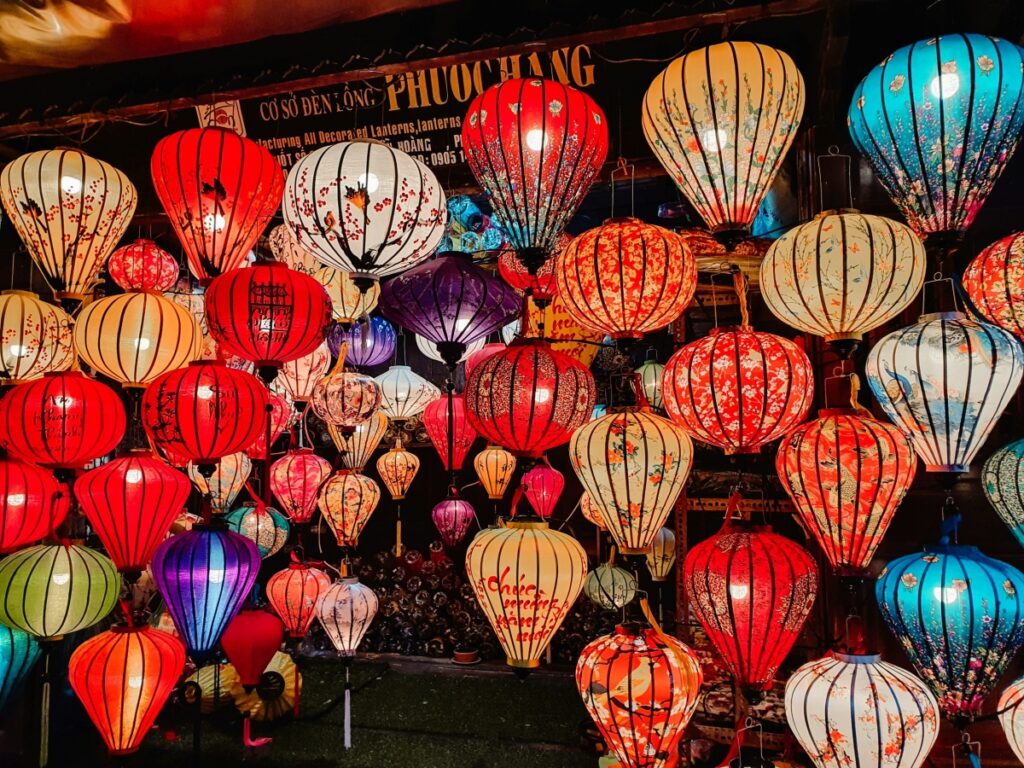
Popular Lantern Shapes and Their Meanings
Hoi An lanterns come in many styles, each with symbolic meanings:
| Lantern Shape | Symbolism |
| Round (Globe) | Unity and wholeness |
| Cylindrical | Longevity |
| Garlic Bulb | Prosperity and health |
| Lotus Blossom | Purity and spiritual awakening |
| Umbrella Shape | Protection and harmony |
| Diamond / Octagon | Fortune and balance |
Color also plays a role. Red represents luck, yellow brings happiness, green symbolizes calmness, and purple suggests elegance.
Best Places for Lantern Making in Hoi An
Thanh Truc Lantern Workshop
Located in the heart of the old town, Thanh Truc is a family-run workshop with decades of experience. English-speaking guides explain each step, and visitors can choose from a wide variety of designs.
- Duration: 1–2 hours
- Price: 150,000 VND ($6 USD)
- Highlight: Collapsible lanterns for easy travel
Hoi An Handicraft Workshop (Duc An House)
This is a government-supported center for traditional arts, offering daily demonstrations and classes in lantern making, silk weaving, and wood carving.
- Duration: ~1.5 hours
- Price: 100,000–200,000 VND
- Highlight: Historic setting with multiple cultural activities
Online Booking via Airbnb & Klook
For convenience, many travelers pre-book lantern workshops through platforms like Klook or Airbnb Experiences, which include reviews, packages, and guides in multiple languages.
- Bonus: Some classes include a walking tour of Hoi An Old Town, tea ceremonies, or a lantern boat ride.
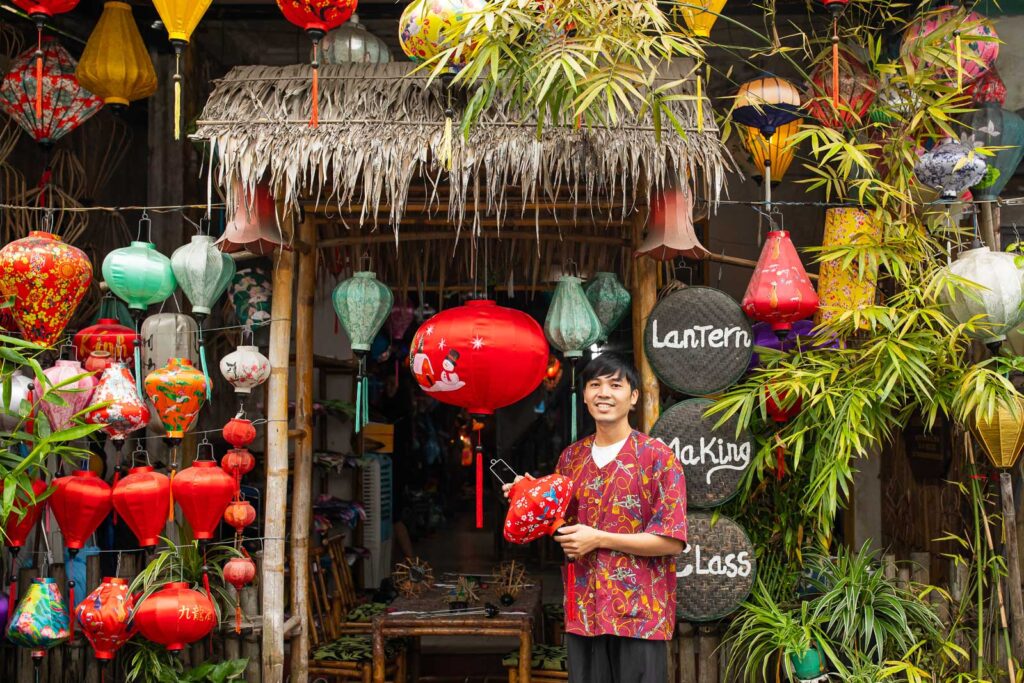
Lanterns in Hoi An’s Festivals and Daily Life
Lanterns are not just for tourists. They remain an integral part of Hoi An’s spiritual and festive life.
Full Moon Lantern Festival
Held on the 14th day of each lunar month, this festival transforms Hoi An into a dreamy lantern-lit stage. All electric lights are turned off, and traditional lanterns illuminate the streets. Activities include:
- Traditional games like bai choi
- Folk music performances
- Floating paper lanterns on the Thu Bon River for good luck
Tết (Vietnamese Lunar New Year)
During Tết, lanterns are symbols of new beginnings. Families hang red and gold lanterns in front of their homes to invite prosperity and ward off evil spirits.
Sustainability and the Future of Lantern Making
As tourism grows, artisans in Hoi An are innovating to keep lantern making both sustainable and eco-friendly:
- Using biodegradable materials: natural fabrics, bamboo, and plant-based glue
- Offering collapsible designs: reducing shipping waste and traveler hassle
- Community-based tourism: ensuring that profits go directly to local artisans
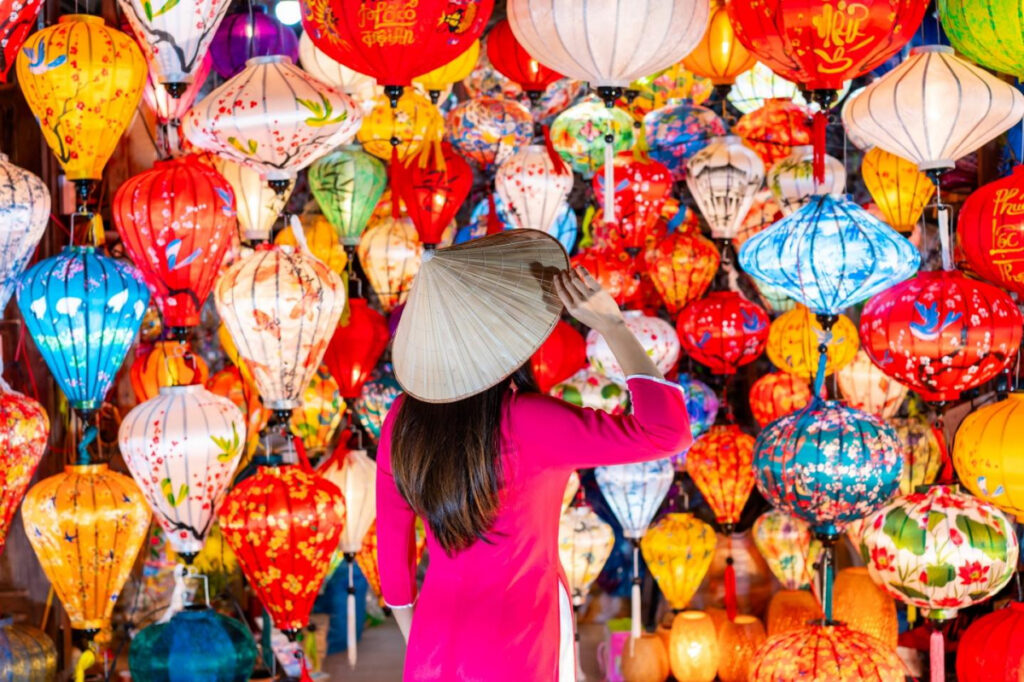
Many workshops now train young locals to keep the tradition alive, blending modern marketing with ancient techniques. Whether you’re seeking cultural enrichment, hands-on creativity, or a unique souvenir to bring home, lantern making Hoi An offers an unforgettable experience that captures the essence of Vietnam’s artistic soul.
More than just a craft, it’s a gateway into centuries-old traditions, where each fold of silk and curve of bamboo tells a story of heritage, resilience, and beauty. For travelers looking to connect deeply with the spirit of Hoi An, there’s no better way than to sit with a local artisan, craft a lantern by hand, and watch it light up—not just a room, but a memory that lasts a lifetime.
In a world where travel can often feel rushed and superficial, lantern making Hoi An offers a rare opportunity to slow down, create something beautiful, and gain cultural insight with VietnamTour.
Whether you’re a solo traveler, couple, or family, learning to craft your own lantern in this charming town will not only brighten your day but leave you with a luminous piece of Vietnam’s soul.
See more post: Vietnam sand dunes: Discover the majestic mini deserts across the country

